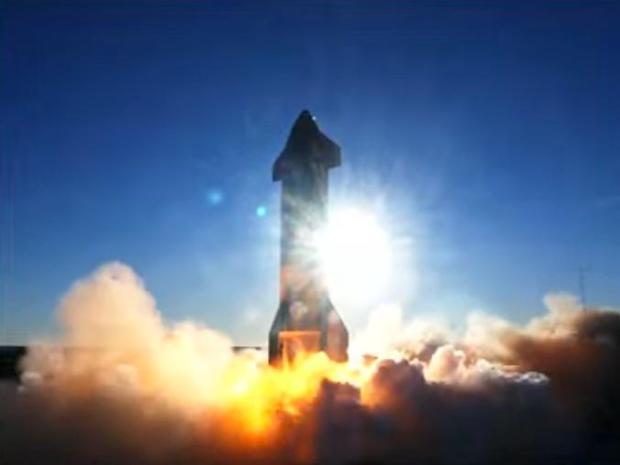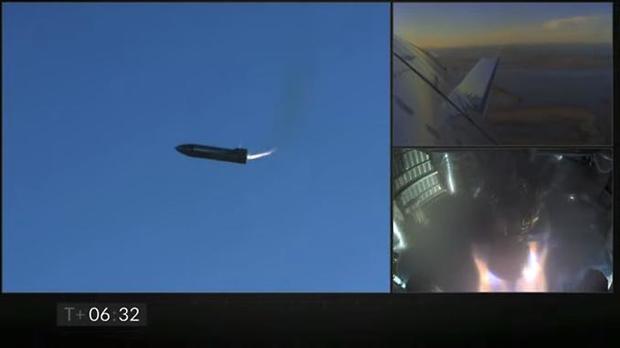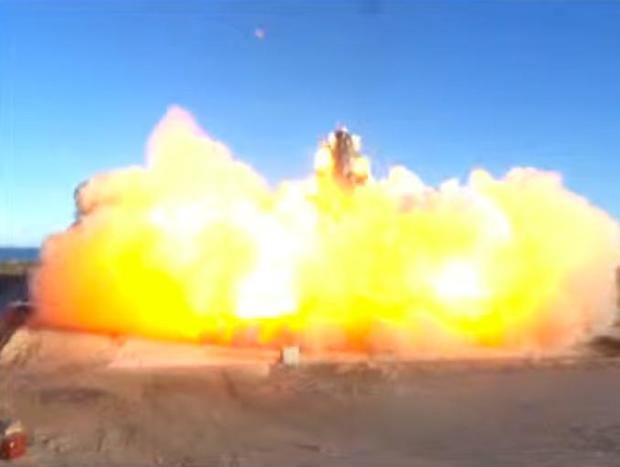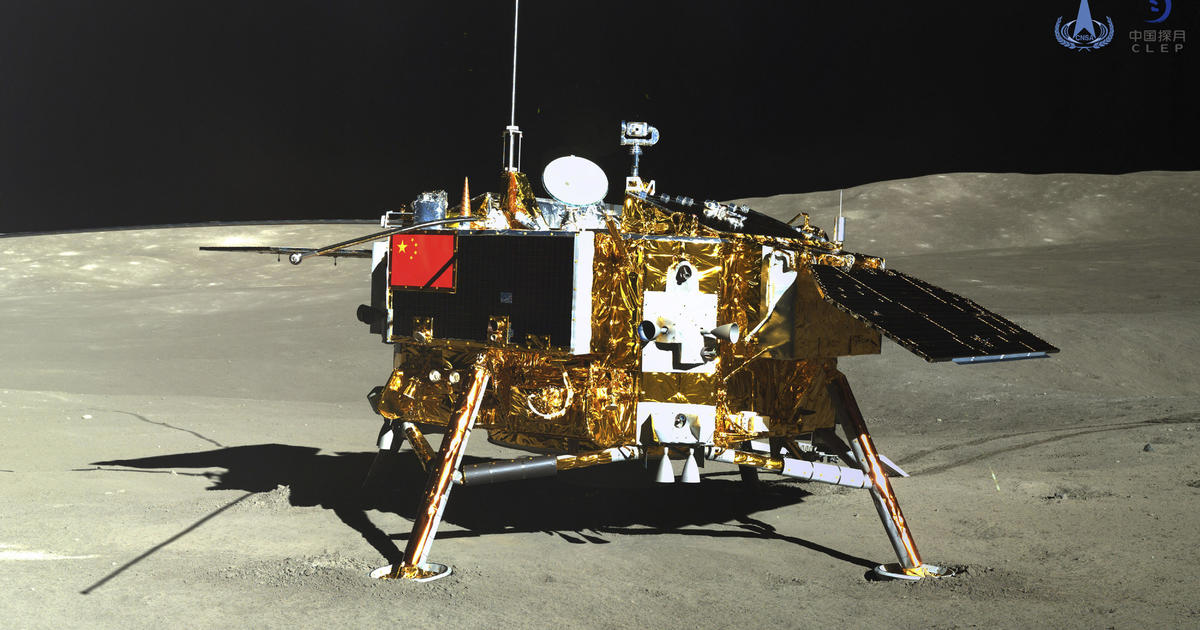SpaceX launches Starship prototype on spectacular test flight, rocket explodes on touchdown
A full-scale prototype of of SpaceX's futuristic Starship rocket blasted off from south Texas Wednesday in the program's most ambitious test flight to date, soaring to airliner altitudes before falling back to Earth and righting itself as planned for a tail-first landing attempt.
However, the 160-foot-tall prototype hit the ground going faster than expected and exploded in a spectacular conflagration that destroyed the unpiloted test vehicle. But the successful climb to a planned altitude of about 41,000 feet, the rocket's active steering during descent and the dramatic flip from horizontal to vertical for landing marked a major milestone for SpaceX.
"Mars, here we come!" Musk tweeted after the test.
The Starship is a planned fully reusable two-stage rocket that Musk says represents the future for the rocket-builder. Wednesday's test focused on the heavy-lift booster's upper stage, the component the company says will one day carry astronauts and cargo to Earth orbit, the moon and, eventually, Mars.
Going into the flight, Musk gave the test a one-in-three chance of meeting all the planned objectives.
A Tuesday launch attempt was called off at the T-minus 1.3-second mark because of an engine abort. Another recycle was called with less than three minutes to go Wednesday, but the SpaceX team fixed whatever stopped the countdown and the Starship thundered to life at 5:45 p.m. ET.
Belching jets of flame from its three methane-fueled Raptor engines, the 160-foot-tall rocket climbed straight away into a clear blue sky, thrilling hundreds of spectators and tourists watching from nearby South Padre Island.
One of the three engines shut down before the vehicle reached its maximum altitude and the remaining powerplants followed suit a few moments later. The rocket then tipped over on its side as it began falling to Earth, using fins at its top and bottom to maintain an atmospheric re-entry orientation.
Nearing the ground, two engines re-ignited as planned and the rocket quickly flipped back vertical just before landing. Musk later tweeted that low pressure in a fuel tank resulted in a higher landing velocity than planned, triggering the resulting explosion, or "RUD," a tongue-in-cheek acronym for "rapid unscheduled disassembly."
Even so, Musk was thrilled with the results from the six-minute 42-second flight of the prototype Starship, serial number 8.
"SN8 did great!" he tweeted. "Even reaching apogee (maximum altitude) would've been great, so controlling all way to putting the crater in the right spot was epic!!"
Former astronaut Garrett Reisman, who helped SpaceX develop its Crew Dragon space station ferry ship, tweeted: "That was absolutely amazing!!! So much fun to watch a test that is this audacious - an excellent example of how fast you can learn if you are willing to fail. Great work."
Wednesday's flight was SpaceX's fifth using Starship technology. A stubby test vehicle known as the "Starhopper," equipped with a single Raptor engine, flew three times in 2019, reaching an altitude of 490 feet on its final flight. A three-engine prototype, serial number 5, also completed a 490-foot flight in August.
The launching Wednesday was the first featuring a tapered nose section and foldable wings, jokingly known as "Elonerons," two at the top of the rocket and two larger fins at its base. The wings are designed to move in flight to manage atmospheric entry and to help steer the ship for landing.
SpaceX did not release any test objectives before launch other than saying on its website that the suborbital flight was "designed to test a number of objectives, from how the vehicle's three Raptor engines perform to the overall aerodynamic entry capabilities of the vehicle (including its body flaps) to how the vehicle manages propellant transition."
The company cautioned that "with a test such as this, success is not measured by completion of specific objectives but rather how much we can learn, which will inform and improve the probability of success in the future as SpaceX rapidly advances development of Starship."
SpaceX has a long history of rapid-fire testing and innovation.
The company began flight operations in 2006 with the single-engine Falcon 1 rocket. After five flights, the last two of them successful, the company transitioned to the Falcon 9, featuring nine Merlin 1D first stage engines and a second stage powered by a single vacuum-rated Merlin.
As of December 8, SpaceX had launched 101 Falcon 9s with a single in-flight failure and one pre-launch mishap. In addition, the company has successfully launched three Falcon Heavy rockets, made up of three Falcon 9 core stages with 27 engines and a single-engine second stage.
SpaceX has shaken up the international aerospace industry by perfecting technology allowing the company to fly first stage boosters back to rocket-powered landings, either on shore or on off-shore droneships, for refurbishment and reuse.
The Falcon 9's first stage is designed to fly up to 100 times. The company's current "fleet leader" has flown six times and an upcoming mission will use a stage making its seventh flight. SpaceX's recovery record, as of December 8, stood at 68 successful landings, 47 on off-shore droneships and 21 on land.
SpaceX won NASA contracts valued at $3.04 billion for 20 space station resupply flights through 2020 using company-developed Dragon cargo ships and contracts for an unspecified amount covering at least nine additional flights through 2024 using an upgraded version known as Dragon 2. The first of the next-generation Dragons was launched from the Kennedy Space Center on Sunday.
SpaceX also holds a $2.6 billion NASA contract to build and launch the piloted Crew Dragon capsule to ferry astronauts to and from the space station. So far, three Crew Dragons, two with astronaut crews and one without, have docked at the station.
The Dragons are designed to fly atop Falcon 9 second stages. But Musk says the Starship is the rocket of the future, the one the company is counting on to carry astronauts, private citizens and large payloads to the moon and Mars.
No matter how one looks at it, the Starship is in a class by itself.
As currently envisioned, it will be made up of a 230-foot-tall "Super Heavy" first stage generating 16 million pounds of thrust — more than twice as much as NASA's Saturn 5 moon rocket — burning liquid methane and liquid oxygen. The Falcon 9 burns less-powerful kerosene and oxygen. A first-stage prototype has not yet been completed.
The rocket's 160-foot second stage, also confusingly known as Starship, will use a half-dozen methane-oxygen SpaceX-developed Raptor engines and would be capable of carrying 100 tons of payload to low-Earth orbit. For comparison, the Falcon Heavy's capability is about 30 tons.
Wednesday's flight featured a prototype of the Starship second stage, this one using just three Raptor engines.
At least three versions of the Starship are envisioned: one for carrying heavy payloads to Earth orbit, the moon or Mars, one designed to carry propellants for orbital refueling operations and one capable of carrying up to 100 passengers at a time.
While that sounds like science fiction to many observers, even skeptics hesitate to sell the company short, given its success perfecting technologies like reusable first stage boosters and nose-cone fairings.
SpaceX is one of three companies working under contracts with NASA to develop designs for moon landers as part of the agency's Artemis program. SpaceX's proposal calls for vertically landing a Starship upper stage on the moon. Astronauts in the nose section would ride an external cable lift to and from the surface.








